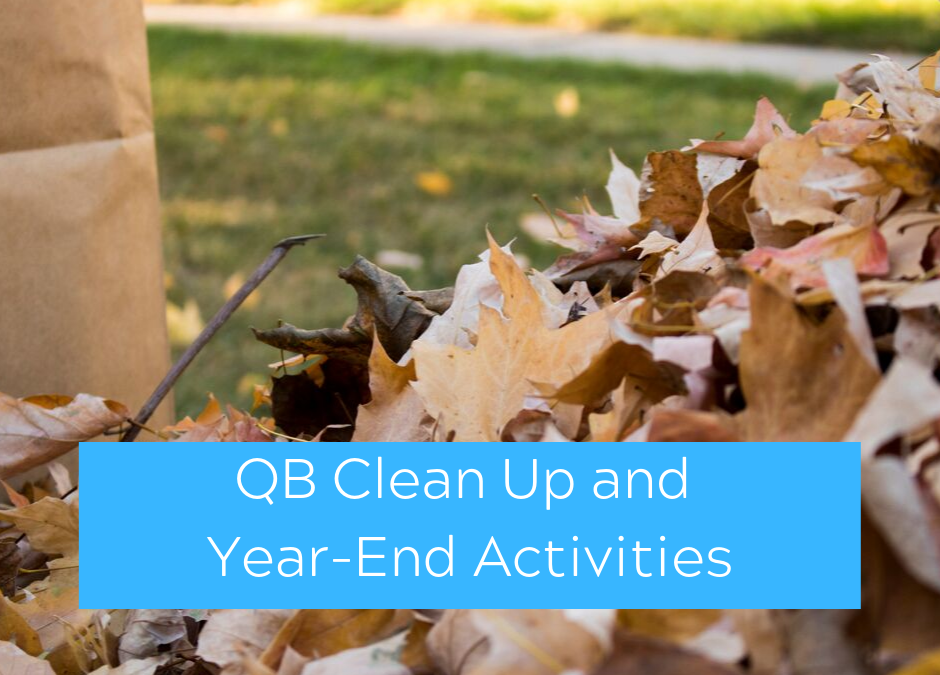General
— Reconcile all bank and credit card accounts. If there are uncleared transactions older than six months, verify they are actual transactions and not duplicates.
— Correct any errors and/or write off old, uncleared transactions.
— Reconcile loan balances to match your bank’s year-end balance
— Review accounts payable for errors, unapplied credits or duplicates
— Review receivables for duplicated income, inaccuracies, or unapplied credits. Write off outstanding receivables that are uncollectible.
— Review sales and use tax records to prepare for annual filings, if applicable.
— Compile a list of equipment, vehicles, or fixtures acquired or disposed of during the year for your accountant. Verify significant purchases (over $500) are posted as fixed assets and not expensed.
— Take a physical inventory, if applicable, and adjust to actual.
— Review 1099 vendors – verify the information is correct and ready to pass to an accountant or prepared for you to process 1096 and 1099 forms.
Payroll
— Review employee records – verify social security numbers and addresses are correct.
— Prepare year-end returns: 941, 940, state withholding, and unemployment reports before processing W-2 forms to verify payroll information is accurate.
— Reconcile all four quarters of Form 941 to Form W-3.
— Process W-2 and W-3 forms.
Other
— Update unemployment rate changes.
— Set a closing date, so QuickBooks alerts you to any transactions posted in the prior year.
— Enter year-end adjusting journal entries.
— Verify your retained earnings agree with your tax returns.
— Consult with an expert.
Does this list feel overwhelming? Many small business owners often have higher priority tasks and would instead consult with an expert. Our QuickBooks accounting coaching team is always happy to assist you with any questions.


